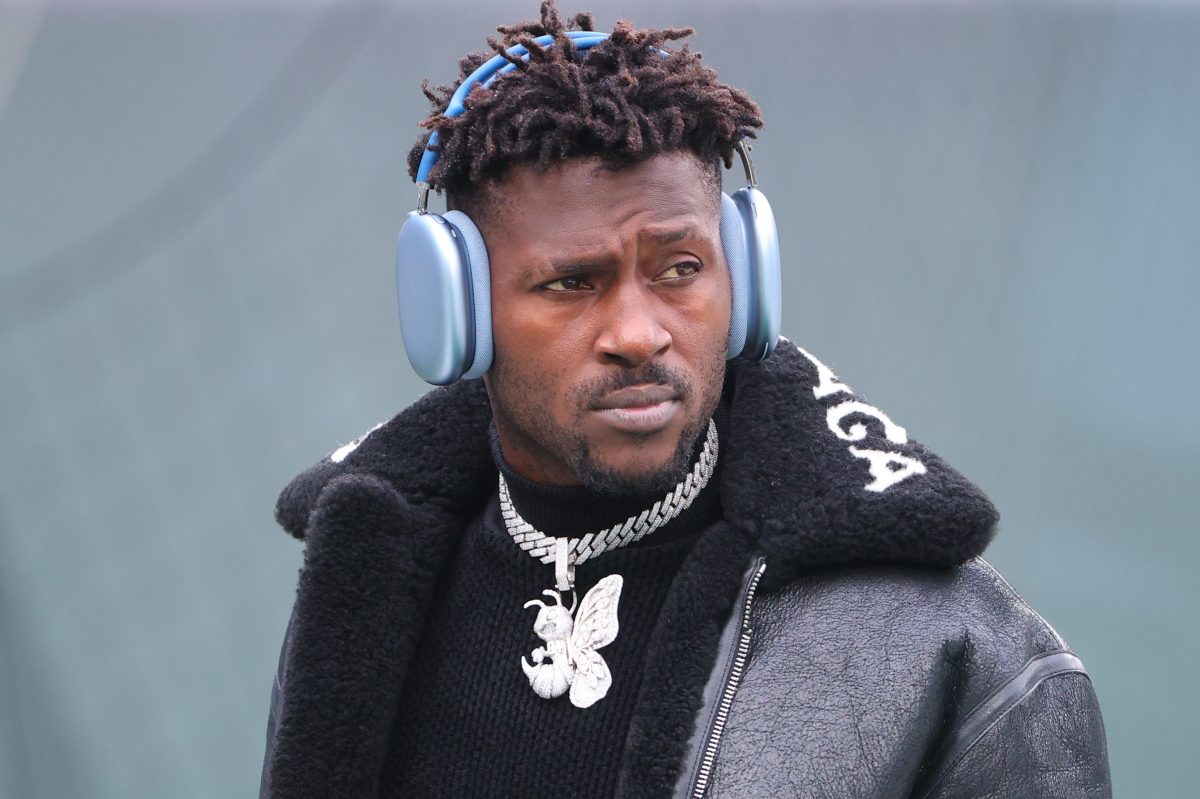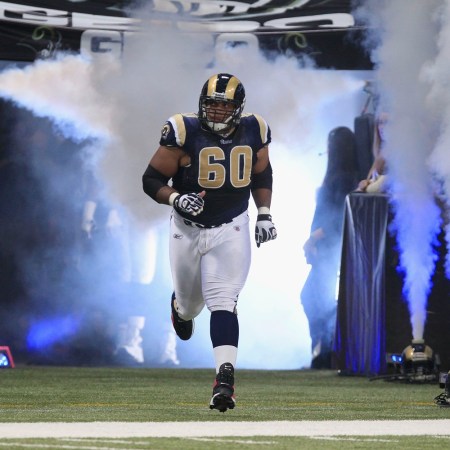Following former Tampa Bay wideout Antonio Brown’s on-field meltdown against the New York Jets on Sunday, many were quick to connect the dots between his behavior and a hit the 33-year-old took from Vontaze Burfict of the Cincinnati Bengals during the AFC Wild Card Game in 2016. It’s tough to watch.
Making that connection certainly makes some sense. Studies have linked erratic behavior with chronic traumatic encephalopathy (CTE), a brain disease caused by repeated head injuries that can’t be confirmed until after death. Brown himself addressed the possibility he developed CTE after being drilled by Burfict in 2016 prior to the Super Bowl last February.
“If I had CTE I wouldn’t be able to have this beautiful gym, I wouldn’t be able to be creative. I wouldn’t be able to communicate,” he said. “I’m perfectly fine. I didn’t take that many big hits. I had like one big hit in 10 years. Anybody who plays this game, they’re going to get hit hard. “He didn’t hit me that hard. You know, I got up and walked off the field. We won the game. I was all right. You play the game long enough, everyone get hit hard.”
That quote from Brown proves nothing besides that fact that he apparently has a bad memory when it comes to how many brutal hits he’s taken over his career. Just a year after the Burfict incident, Brown endured another vicious helmet-to-helmet hit he took from Bengals safety George Iloka during an ugly Monday Night Football game that Ben Roethlisberger brushed off as simply “AFC North football.”
The point is, either of those hits to head — or the countless others likely Brown suffered during more than a decade of playing in the NFL as well as three years of college ball at Central Michigan — could have damaged his brain and contributed to the scene that unfolded on Sunday against the Jets. But because CTE can only be diagnosed via post-mortem brain-tissue analysis, the public has no way of knowing how severely (if at all) a lifetime of tackle football has impacted Brown’s nervous system.
By the same token, Brown’s behavior, which has been well-documented all the way back to his college days and includes incidents both playful and predatory, could be the result of something else entirely. There’s also the possibility that Brown, just wanted to drum up some attention for his new rap single “Pit Not the Palace,” which he dropped on social media hours after storming off the field.
As the entire world saw, Brown left the field on Sunday and likely won’t be back on an NFL roster this season, if ever. What’s clear is that he’s in a fragile mental state, has been for years and could probably use some professional help.
“It’s a difficult situation,” Tom Brady said after Tampa’s 28-24 win over the Jets. “Everybody should do what they can to help him in ways that he really needs it. We all love him. We care about him deeply. We want to see him be at his best. Unfortunately, it won’t be with our team. I think everyone should be very compassionate and empathetic toward some very difficult things that are happening.”
What’s less clear is the cause of Brown’s issues, which is why it’s irresponsible for armchair internet doctors to rush to diagnose him. The outburst yesterday could have been influenced by the sore ankle that kept Brown out of games earlier this season, locker-room issues with coaches or teammates the public isn’t privy to, a degenerative brain condition we know is synonymous with playing football, or some combination of all the above. We can speculate, but there’s no way to know for sure, and chalking the four-time All-Pro’s bizarre behavior up to CTE could lead to other, perhaps pre-existing mental-health issues going ignored or untreated.
Maybe compassion and empathy shouldn’t be at the top of the list of what Antonio Brown deserves right now. But restraint from diagnosing him from afar absolutely should be.
Whether you’re looking to get into shape, or just get out of a funk, The Charge has got you covered. Sign up for our new wellness newsletter today.


















